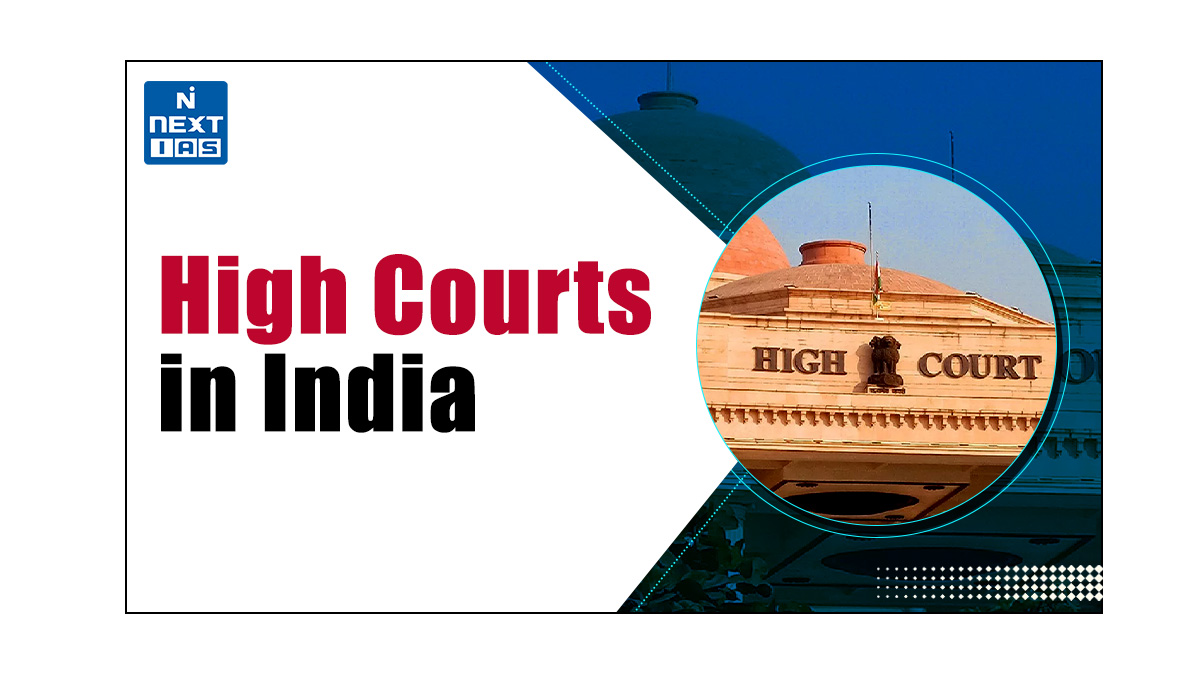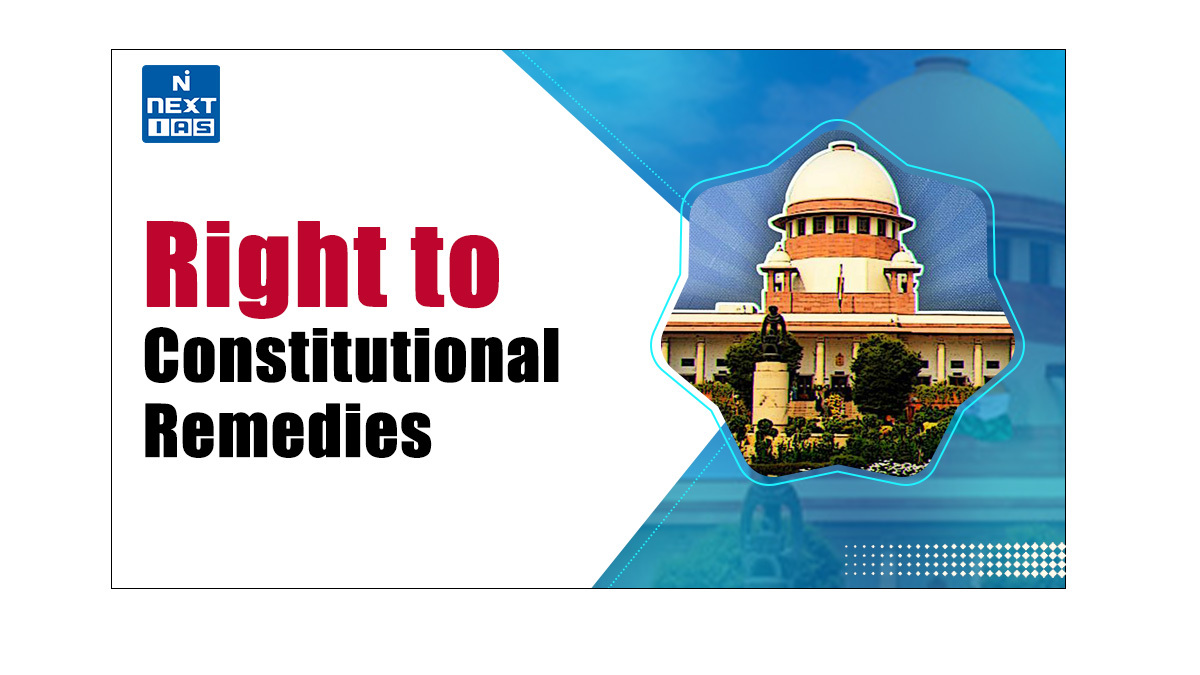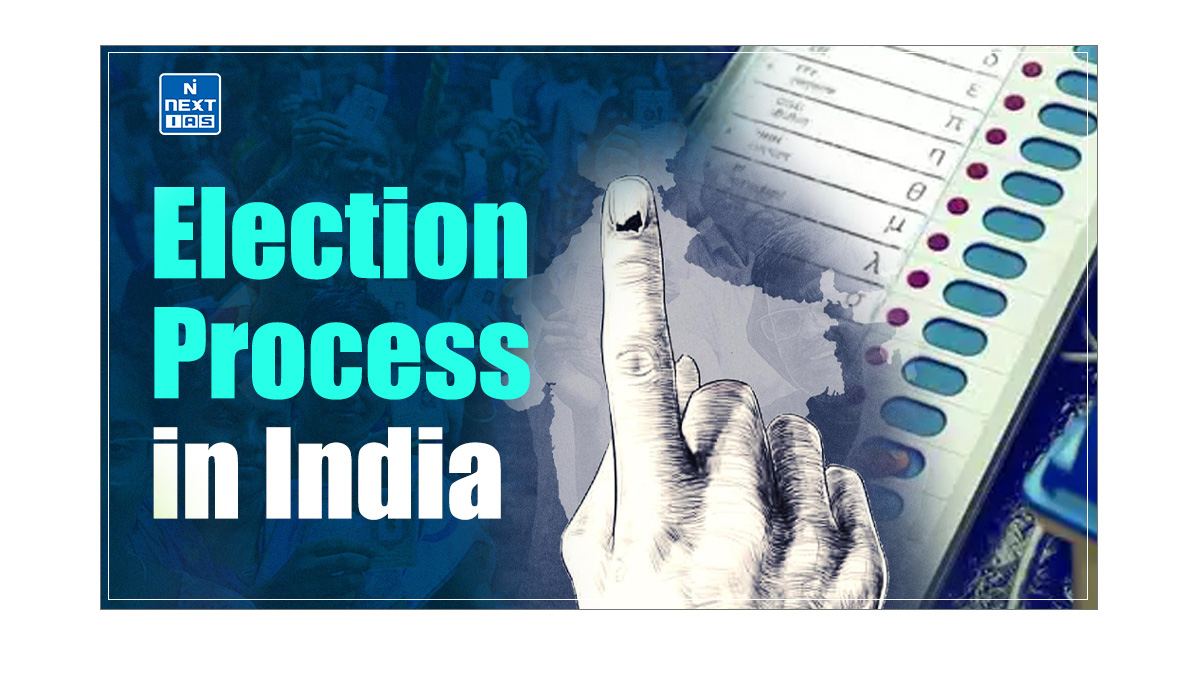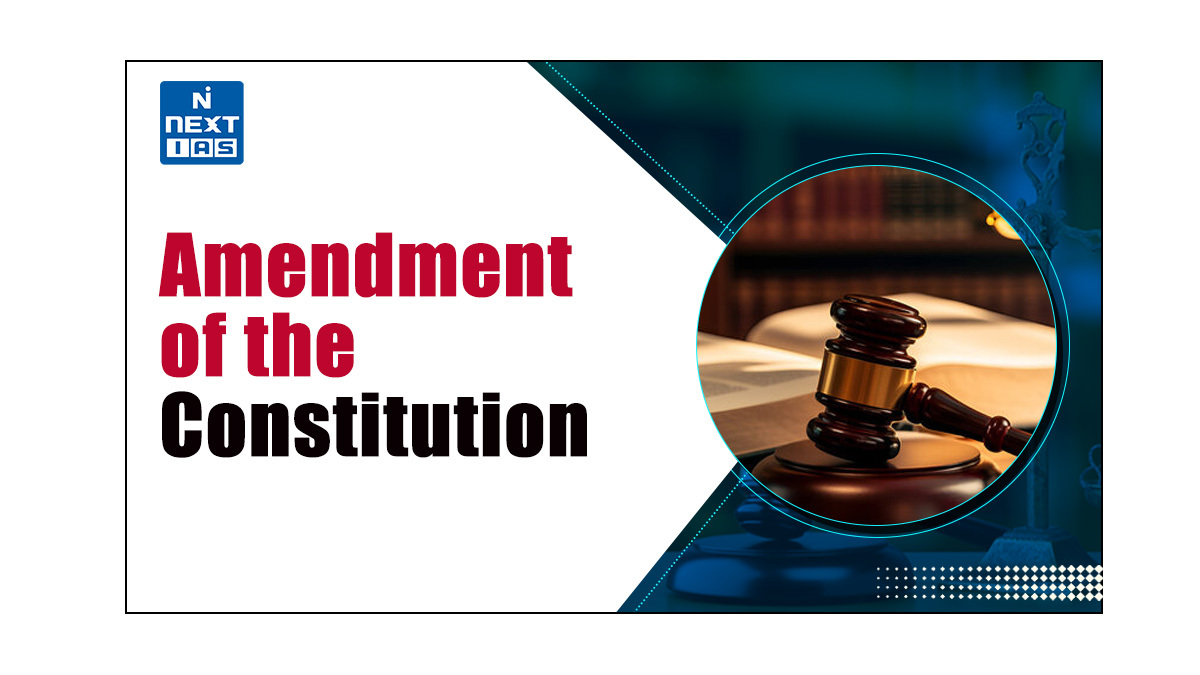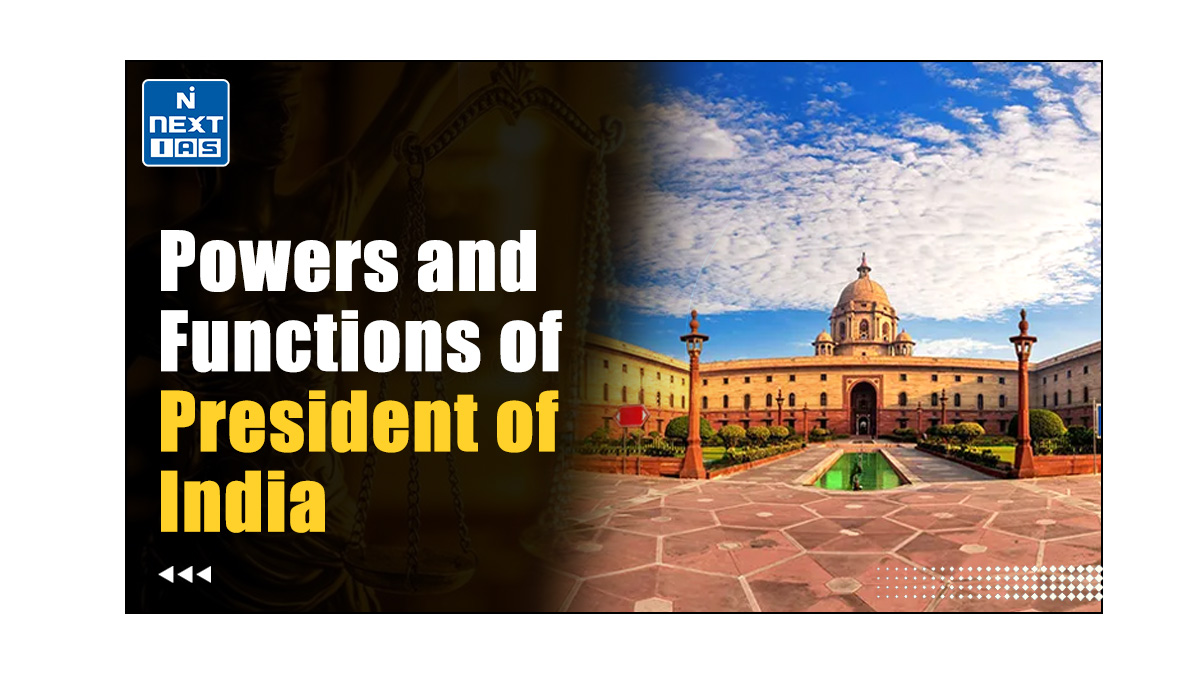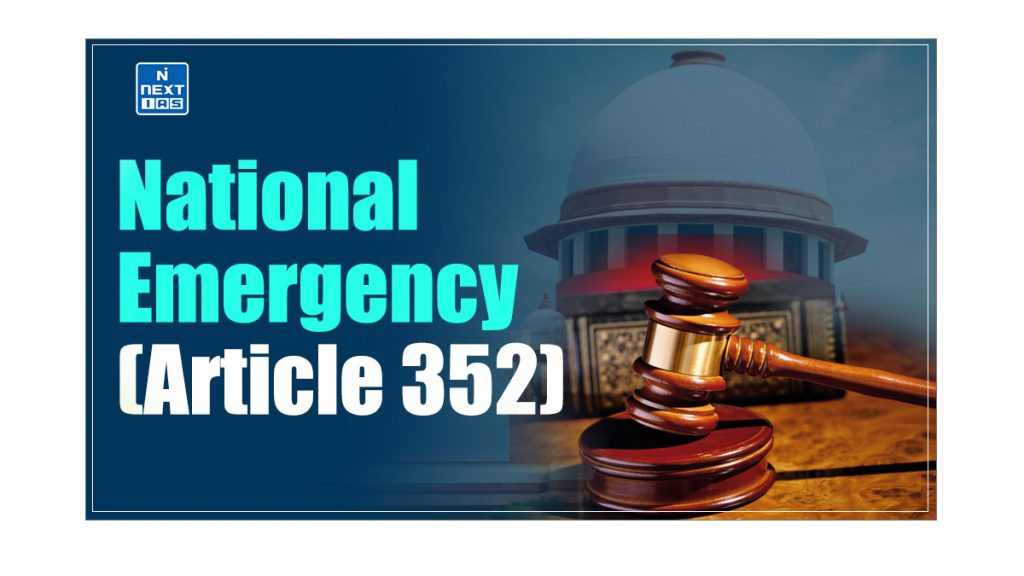
National Emergency (Article 352) in India, as one of the three types of emergencies provided for by the Indian Constitution, remains a crucial tool in the hand of the Central Government to meet any abnormal situation effectively. Though not bereft of criticisms, it is largely seen as an important tool to safeguard the sovereignty, unity, integrity, and security of the country, the democratic political system, and the Constitution. This article of Next IAS aims to study in detail the National Emergency (Article 352), its meaning, constitutional provisions, grounds of declaration, process of parliamentary approval, revocation, impacts, significance and other related aspects.
Meaning of National Emergency in India
- In India, a National Emergency (Article 352) refers to a period when the security of the nation is severely threatened.
- It is a period when the constitutional rights and freedoms of individuals may be curtailed, and the powers of the central government are significantly enhanced to address perceived threats to the nation.
- The expression ‘Proclamation of Emergency’ is used in the Indian Constitution to denote the National Emergency.
- A National Emergency empowers the Central government to take swift and decisive action to safeguard the security, integrity, and sovereignty of the country.
Constitutional Provisions Related to National Emergency
Article 352 to Article 354 in Part XVIII of the Indian Constitution deal with the National Emergency. These articles and their subject matters can be seen in the table below.
| Articles | Subject-Matter |
|---|---|
| Article 352 | Proclamation of Emergency |
| Article 353 | Effect of Proclamation of Emergency |
| Article 354 | Application of provisions relating to the distribution of revenues while a Proclamation of Emergency is in operation |
Grounds of Declaration of National Emergency
- The President can declare a National Emergency in India under Article 352 when the security of India or a part of it is threatened by:
- war,
- external aggression, or
- armed rebellion.
- Originally, the Constitution mentioned ‘Internal Disturbance‘ as the third ground for the proclamation of a National Emergency.
- However, because of the vagueness and ambiguity of the phrase ‘Internal Disturbance’, it was replaced by the phrase ‘Armed Rebellion’ by the 44th Constitutional Amendment Act of 1978.
- The President can declare a National Emergency even before the actual occurrence of war or external aggression or armed rebellion if he is satisfied that there is an imminent danger to the country.
- The President can also issue different proclamations, whether or not there is a proclamation already issued by him and such proclamation is in operation.
- This provision was added by the 38th Constitutional Amendment Act of 1975.
- Based on the grounds of the declaration, the National Emergency is called by any one of the following 2 names:
- External Emergency – It refers to a National Emergency that is declared on the grounds of War or External Aggression.
- Internal Emergency – It refers to a National Emergency that is declared on the grounds of Armed Rebellion.
| The 44th Constitutional Amendment Act of 1978 mandated that the President can proclaim a National Emergency only after receiving a written recommendation from the Cabinet i.e. only on the concurrence of the Cabinet and not merely on the advice of the Prime Minister. |
Applicability of National Emergency
- A proclamation of National Emergency may apply to the entire country or only a part of it.
- The 42nd Constitutional Amendment Act of 1976 enabled the President to limit the operation of a National Emergency to a specified part of India.
Judicial Review of Proclamation of National Emergency
The position regarding the possibility of judicial review of the proclamation of National Emergency has evolved over a period of time. The same can be seen as follows:
38th Constitutional Amendment Act of 1975
The 38th Constitutional Amendment Act, 1975 made the declaration of a National Emergency immune from judicial review.
44th Constitutional Amendment Act of 1978
The 44th Constitutional Amendment Act, 1978 deleted the above provision of 38th Constitutional Amendment Act, 1975. Thus, it reversed the position and restored the ability of the judiciary to review the decision of the declaration of a National Emergency.
Minerva Mills Case of 1980
In Minerva Mills Case, 1980, the Supreme Court held that the proclamation of National Emergency can be challenged in a court on grounds of malafide or when the declaration was based on extraneous or irrelevant facts.
Parliamentary Approval of National Emergency
- The proclamation of a National Emergency must be approved by both Houses of Parliament within one month from the date of its issue.
- Originally, the period allowed for approval of a National Emergency by the Parliament was two months.
- It was reduced to one month by the 44th Constitutional Amendment Act of 1978.
- Originally, the period allowed for approval of a National Emergency by the Parliament was two months.
- If the proclamation of National Emergency is issued at a time when the Lok Sabha had been dissolved or the dissolution of Lok Sabha takes place during one month without approving the proclamation, then the proclamation survives until 30 days from the first sitting of new constituted Lok Sabha, provided the Rajya Sabha has in the mean time approved it.
Duration of National Emergency
- If approved by both Houses of Parliament, the National Emergency continues for six months.
- It can be extended to an indefinite period with the approval of Parliament every six months.
- This provision of periodic approval (every six months) was added by the 44th Constitutional Amendment Act of 1978.
- Prior to this amendment, National Emergency, once approved by the Parliament, could remain in operation as along as the Executive desired.
- If the dissolution of the Lok Sabha takes place during the period of six months without approving the further continuation of the emergency, then the proclamation survives until 30 days from the first sitting of the newly constituted Lok Sabha, provided the Rajya Sabha in the meantime approves its continuation.
| Every resolution approving the Proclamation of National Emergency or its continuation must be passed by either House of Parliament by a Special Majority i.e. 50% of the total membership of the House, and a majority of not less than 2/3rd of the members of that House present and voting. – This provision of Special Majority was added by the 44th Constitutional Amendment Act of 1978. – Earlier, such resolutions could be passed by a Simple Majority of either House of Parliament. |
Revocation of Proclamation of National Emergency
- A Proclamation of Emergency can be revoked by the President at any time by a subsequent proclamation.
- Such a proclamation does not require parliamentary approval.
- The 44th Constitutional Amendment Act of 1978 mandated that he President must revoke a proclamation of National Emergency if the Lok Sabha passes a resolution disapproving its continuation.
- Prior to that, a proclamation could be revoked by the President on his own and Lok Sabha had no control in this regard.
- The 44th Constitutional Amendment Act of 1978 also provided that if 1/10th of the total members of Lok Sabha give written notice to the Speaker or to the President (if the House is not in session), a special sitting of the House should be held to consider a resolution disapproving the continuation of the proclamation of National Emergency.
- A resolution of disapproval of continuation is different from a resolution approving the continuation of a proclamation of National Emergency in the following two respects:
| Resolution for Approval of Continuation of National Emergency | Resolution for Disapproval of Continuation of National Emergency |
|---|---|
| The resolution for the approval of continuation of National Emergency is required to be passed by both the Houses of Parliament. | The resolution for the disapproval of continuation of National Emergency is required to be passed by the Lok Sabha only. |
| The resolution for the approval of the continuation of the National Emergency needs to be adopted by a Special Majority. | The resolution for disapproval of the continuation of the National Emergency needs to be adopted by a Simple Majority. |
Effects of National Emergency
The consequences and effects of a National Emergency can be seen under the following three heads:
- Effects of National Emergency on Centre-State Relations
- Effect of National Emergency on the Life of Lok Sabha and State Assembly
- Effect of National Emergency on Fundamental Rights
These consequences and effects of the National Emergency have been discussed in detail in the sections that follow.
Effects of National Emergency on Center-State Relations
During the operation of a National Emergency, the normal dynamics of the Center–State relations undergoes some changes. These changes can be studied under the following three heads:
Executive
- In normal times, the Center can give executive directions to a State only on certain specified matters. However, during a National Emergency, the Center becomes entitled to give executive directions to a State on any matter.
- Thus, the State governments are brought under the complete control of the Center, though they are not suspended.
- The 42nd Amendment Act of 1976 provided that the above consequence applies not only to a state where the National Emergency is in operation but also to any other state.
Legislature
During a National Emergency, the normal distribution of the legislative powers between the Centre and States is suspended, though the State Legislatures are not suspended. Its implications are the following:
- During a National Emergency, the Parliament becomes empowered to make laws on any subject in the State List.
- It is to be noted that although the State Legislature and its legislative power are not suspended, it becomes subject to the overriding power of Parliament.
- The laws made by Parliament on State subjects during a National Emergency become inoperative six months after the emergency has ceased to operate.
- During a National Emergency, the President can issue ordinances on the State Subjects, if the Parliament is not in session.
The following points are to be noted w.r.t. these changes in the legislative sphere during a National Emergency.
- The Parliament can confer powers and impose duties upon the Center or its officers and authorities in respect of matters outside the Union List, to carry out the laws made by it under its extended jurisdiction.
- The laws made by Parliament on State subjects during a National Emergency become inoperative six months after the emergency has ceased to operate.
- The 42nd Amendment Act of 1976 provided that the above consequences apply not only to a state where the National Emergency is in operation but also to any other state.
Financial
- During a National Emergency, the President can modify the constitutional distribution of revenues between the Center and the States.
- This means that the President can either reduce or cancel the transfer of finances from the Center to the States.
- The following points are to be noted w.r.t. the above consequence:
- Such modification continues till the end of the financial year in which the Emergency ceases to operate.
- Every order of the President which seeks to make such modifications has to be laid before both the Houses of Parliament.
Effects of National Emergency on Life of Lok Sabha and State Assembly
- During a National Emergency in India, the life of Lok Sabha may be extended beyond its normal term of 5 years by a law of Parliament for one year at a time, for any length of time.
- This extension cannot continue beyond a period of six months after the emergency has ceased to operate.
- Similarly, the Parliament may extend the normal tenure of a State Legislative Assembly by one year at a time, for any length of time.
- This extension cannot continue beyond a period of six months after the emergency has ceased to operate.
Effects of National Emergency on Fundamental Rights
During a National Emergency in India, some of the Fundamental Rights get suspended. There are two constitutional provisions (Article 358 and Article 359) regarding the same.
Both these provisions are discussed in detail in the following sections.
Article 358 – Suspension of Fundamental Rights under Article 19
- As per Article 358, when a proclamation of National Emergency is made, the six Fundamental Rights under Article 19 (Right to Freedom) are automatically suspended.
- No separate order for their suspension is required.
- Thus, during operation of a National Emergency, the state is freed from the restrictions imposed by Article 19.
- The State can make any law or can take any executive action abridging or taking away the six Fundamental Rights guaranteed by Article 19.
- Any such law or executive action cannot be challenged on the ground that they are inconsistent with the six Fundamental Rights guaranteed by Article 19.
- When the National Emergency ceases to operate, Article 19 automatically revives and comes into force.
- Any law made during an Emergency, to the extent of inconsistency with Article 19, ceases to have an effect.
- However, no remedy lies for anything done during an Emergency even after the Emergency expires.
- In other words, the legislative and executive actions taken during the Emergency can not be challenged even after the Emergency ceases to operate.
- The 44th Constitutional Amendment Act of 1978 made two changes with respect to this provision:
- Firstly, the six Fundamental Rights under Article 19 (Right to Freedom) can be suspended only when a National Emergency is declared on the grounds of war or external aggression and not on armed rebellion.
- Secondly, only those laws that are related to the Emergency are protected from being challenged, and not other laws.
- Also, only those executive actions, which are taken under such laws, are protected from being challenges, and not other executive actions.
Article 359 – Suspension of Other Fundamental Rights
- As per Article 359, the President can suspend the right to move any court for enforcement of Fundamental Rights during a National Emergency.
- In this case, Fundamental Rights themselves are not suspended, but only their enforcement is suspended.
- The following points are to be noted w.r.t. this provision:
- Such an order of the President should be laid before both Houses of Parliament for their approval.
- The suspension of enforcement relates to only those Fundamental Rights that are specified in the Presidential Order.
- The suspension could be for the period of emergency or for a shorter period as mentioned in the order.
- The suspension order may extend to the whole or any part of the country.
- While a Presidential Order is in force, the State can make any law or can take any executive action abridging or taking away the specified Fundamental Rights.
- Any such law or executive action cannot be challenged on the ground that they are inconsistent with the specified Fundamental Rights
- When the order ceases to operate, any law so made, to the extent of inconsistency with the specified Fundamental Rights, ceases to have an effect. However, no remedy lies for anything done during the operation of the order even after the order ceases to operate.
- The 44th Constitutional Amendment Act of 1978 made two changes with respect to this provision:
- The President cannot suspend the right to move the court for enforcement of Fundamental Rights under Article 20 (the right to protection in respect of conviction for offences) and Article 21 (the right to life and personal liberty).
- Only those laws and that are related to Emergency and executive actions taken under such laws are protected from being challenged, and not other laws.
Similarities between Article 358 and Article 359
- Both Article 358 and Article 359 provide immunity to only those laws from being challenged in the Court which are related to the Emergency and not other laws.
- Both Article 358 and Article 359 provide protection to only those executive actions which are taken under such laws.
Differences between Article 358 and Article 359
The differences between the provisions under Article 358 and Article 359 can be seen as follows:
| Article 358 | Article 359 |
|---|---|
| This provision is confined to Fundamental Rights under Article 19 only. | This provision extends to all those Fundamental Rights whose enforcement is suspended by Presidential Order. |
| This provision automatically comes into force as soon as the Emergency is declared. | This provision does not come into force automatically. A Presidential Order has to be issued for this. |
| This provision is applicable only in case of External Emergency, and not in case of Internal Emergency. | This provision is applicable in both External Emergency and Internal Emergency. |
| This article remains in force for the entire duration of the Emergency. | This article remains in force for the period specified in the Presidential Order. |
| It extends to the entire country. | It extends to the area specified in the Presidential Order. |
Significance of National Emergency
The significance of a National Emergency in India can be seen in the following points:
- Swift Action – It enables the government act swiftly and decisively to manage crises such as war, external aggression, or armed rebellion without being hindered by regular legislative and judicial processes.
- National Security – It enables the government to safeguard national security by empowering it to take immediate and effective measures to counter threats posed by external aggression or internal unrest.
- Preservation of Order – This provision helps prevent chaos and preserving the constitutional order of the country during times of crisis.
- Unity and Integrity – It allows the government to protect the sovereignty, unity, and integrity of the nation by taking necessary steps to counter any internal or external threats.
- Effective Governance during Abnormality – In situations of crisis or breakdown of normal governance mechanisms, it allows for the centralization of power, ensuring swift decision-making and effective governance.
Criticism of National Emergency
The provisions of the National Emergency in India can be criticised on the following grounds:
- Potential for Abuse – Critics argue that National Emergency provisions grant excessive power to the government, which can be misused for political purposes rather than genuine emergencies. This can lead to authoritarianism and undermine democratic norms.
- Undermining Democracy – National emergencies have the potential to undermine democratic principles by centralizing power and weakening the checks and balances between different branches of government. They may also suppress dissent and stifle political opposition, thereby limiting political freedoms.
- Violation of Rights – During a National Emergency, the fundamental rights of citizens may be suspended or curtailed, leading to violations of civil liberties guaranteed by the Constitution.
- Threat to Federalism – National Emergency provisions often result in the centralisation of power, infringing upon the autonomy and sovereignty of States. This can undermine the federal structure of the country and lead to tensions between the Central and State governments.
- Long-term Damage – Even after the Emergency is lifted, the effects of Emergency measures can persist, including erosion of trust in institutions, damage to democratic norms, and loss of confidence in the government. This can have lasting consequences for governance and political stability.
- Potential for Authoritarianism – Concentration of emergency powers in the hands of the executive can pave the way for authoritarianism, with leaders exploiting crises to consolidate power and undermine democratic institutions.
Conclusion
The provisions for declaring a National Emergency in India are a double-edged sword. While they equip the central government with the necessary powers to safeguard the nation during times of crisis, they also carry the potential for abuse and undermining of democratic norms. The careful balance between enabling effective crisis response and upholding constitutional safeguards remains a crucial challenge. As India navigates through evolving security threats and political dynamics, it is essential that the emergency provisions are exercised judiciously, with robust oversight and adherence to the rule of law, to ensure the preservation of the country’s democratic fabric.
Frequently Asked Questions (FAQs)
How many times National Emergency declared in India?
The National Emergency in India has been declared three times – 1962 (Indo-China War), 1971 (Indo-Pakistan War), and 1975 (Internal Disturbances).
During a National Emergency, which Article is suspended?
According to Article 358, when a proclamation of National Emergency is made on the grounds of war or external aggression, the six fundamental rights under Article 19 are automatically suspended.
What are the grounds for the imposition of a National Emergency?
The grounds for the imposition of a National Emergency are:
– War,
– External Aggression, and
– Armed Rebellion.
